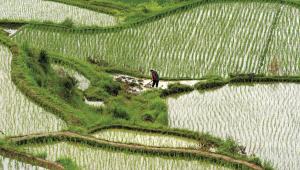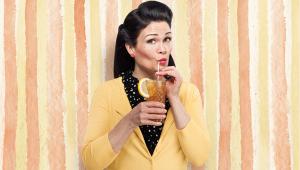Website Design; The Web Page Journal; Working With liveBooks On A Photographic Website Page 2
When liveBooks touched base the first stage was creating what they deem a “design preference,” a sort of visual test that helps determine the look and feel of the site experience. The process is greatly aided by a sampling of the many sites the company has already created. This does not imply or steer you to a cookie-cutter approach, but certainly helps in making decisions. If desired, you can also upload a “rough” and the company will work with that. The profile process includes what might seem like mundane items such as typefaces, frames, preference for drop shadows, etc., all of which add up to a unique look as you build pages. You also get to name Menu items, such as Portfolios, Prints, Contact, etc. If you get stumped you can also work on the phone with a personal designer, something I found exceedingly helpful as I went along. My coach, if you will, was Corrie Tse, who was both helpful and patient. As you fill out these preferences you are constantly pointed to sample sites to gain inspiration and guidance; you are also assigned a temporary URL where you can watch the build as you progress.
Of course, on any photo site the pictures are the thing, and that’s probably the biggest challenge for us all—I know it was for me. The site package I chose allowed for numerous portfolios with 32 images in each. As the process went along I spent hours combing through images old and new, placing each in a folder for work later. I made sure that each image was properly sized (the specs and tutorials are straightforward) and was in sRGB JPEG mode.
 |
|
|
Uploading images and then choosing the right order, and sort, is made simple with the use of liveBook’s editSuite software. Using a simple directory upload process, the images in a folder are first selected, then uploaded to a Lightbox arrangement. You can add as many Libraries, which are storage areas on the liveBooks server, as you wish. Then, when you have the categories of the Portfolios ready you can drag and drop the images into the various Portfolios, changing order and even adding and deleting images as you please with ease. This is where you get to play with images, and refresh them as you wish down the line. The arrangement lets you store images for later use as well. I find that projects like this are best done in “fits and starts,” given the busy nature of life, and that the ability to store images in numerous Libraries allows you to plan ahead when you have the time to dedicate to the task.
 |
|
|
But there’s more. You can dig deeper into the site creation and make it work even more efficiently for you. If you have other clips or publication credits on sites you can add live links to same; you can add metadata to an image such as captions, keywords, and copyright data (recommended); you can create SEO (Search Engine Optimization) tabs; plus add FTP capability (big files for client download), downloadable PDFs, and even a shopping cart if you want to conduct commerce right off the site.
All this makes the site a work in progress, which it will be for me as I grow in knowledge and have the time to dedicate to the task. Given that a website is an important part of any photographer’s work these days, it pays to investigate the options. To learn more about liveBooks and their services and see samples, visit www.liveBooks.com. To see the fruits of my admittedly “work-in-progress” labors, check out www.georgeschaub.com.
- Log in or register to post comments

















































